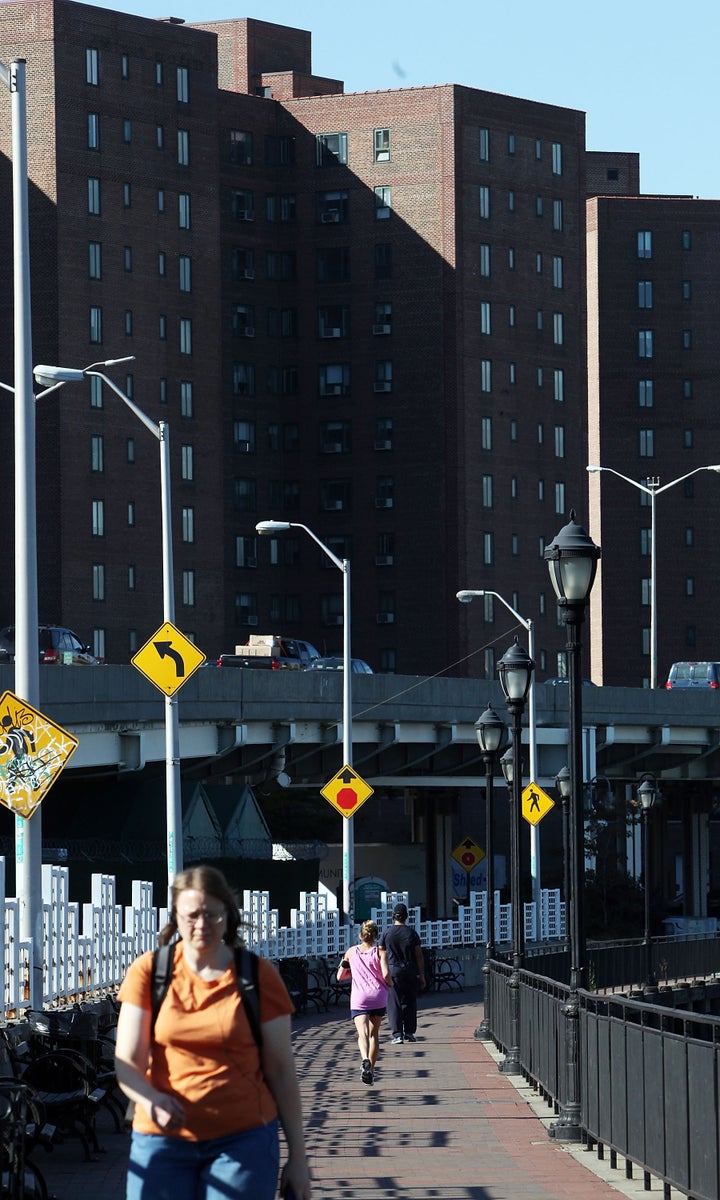* Vacancies at lowest level since late '01
* Effective rents on the rise
* Rate expected to fall further this year
Jan 5 (Reuters) - U.S. apartment vacancies fell to a 10-year low in the fourth quarter and rents continued to rise as the economy showed signs of growth. real estate research firm Reis Inc said on Thursday.
Those trends should continue this year, the firm added, with rents increasing sharply as vacancies decline.
Reis said the nationwide vacancy rate fell to 5.2 percent, a level last seen in late 2001. It is also lower than the lowest vacancy rate seen during the last cycle, in 2006, before vacancies started to soar because of the financial crisis.
Asking rents rose 0.4 percent in the quarter, while effective rents -- what the tenant actually pays on an annual basis after discounts -- rose 0.5 percent. Nearly 90 percent of the markets surveyed reported higher effective rents, the firm said.
"The fourth quarter tends to be a weaker leasing period given that most households make moving decisions in the second and third quarters, but the apartment sector exceeded expectations once again, ostensibly due to heightened economic activity in the last three months," Reis's research head, Victor Calanog, said in a commentary.
Apartment supply was tightest in the college town of New Haven, Connecticut, with a vacancy rate of 2.1 percent, followed closely by New York City at 2.4 percent.
Rent growth was highest in San Francisco, where effective rents grew 1.7 percent in the fourth quarter to $1,865.
Over the course of the year, the biggest decline in the vacancy rate was in the cities of Charleston, South Carolina, and Greensboro, North Carolina.
One of the key factors driving the tightening market, Reis said, was a lack of supply. Some 37,678 new apartment units came to market in 2011, the firm said, the lowest total in 31 years of data and nearly 25 percent less than the prior low.
That should change, though, as developers are drawn to what has been the best-performing real estate sector of late.
"By 2013 the influx of new units may begin eroding any benefit the sector derives from tight supply conditions," Calanog said. (Reporting By Ben Berkowitz in Boston; Editing by Steve Orlofsky)
Support HuffPost
Our 2024 Coverage Needs You
Your Loyalty Means The World To Us
At HuffPost, we believe that everyone needs high-quality journalism, but we understand that not everyone can afford to pay for expensive news subscriptions. That is why we are committed to providing deeply reported, carefully fact-checked news that is freely accessible to everyone.
Whether you come to HuffPost for updates on the 2024 presidential race, hard-hitting investigations into critical issues facing our country today, or trending stories that make you laugh, we appreciate you. The truth is, news costs money to produce, and we are proud that we have never put our stories behind an expensive paywall.
Would you join us to help keep our stories free for all? Your contribution of as little as $2 will go a long way.
Can't afford to donate? Support HuffPost by creating a free account and log in while you read.
As Americans head to the polls in 2024, the very future of our country is at stake. At HuffPost, we believe that a free press is critical to creating well-informed voters. That's why our journalism is free for everyone, even though other newsrooms retreat behind expensive paywalls.
Our journalists will continue to cover the twists and turns during this historic presidential election. With your help, we'll bring you hard-hitting investigations, well-researched analysis and timely takes you can't find elsewhere. Reporting in this current political climate is a responsibility we do not take lightly, and we thank you for your support.
Contribute as little as $2 to keep our news free for all.
Can't afford to donate? Support HuffPost by creating a free account and log in while you read.
Dear HuffPost Reader
Thank you for your past contribution to HuffPost. We are sincerely grateful for readers like you who help us ensure that we can keep our journalism free for everyone.
The stakes are high this year, and our 2024 coverage could use continued support. Would you consider becoming a regular HuffPost contributor?
Dear HuffPost Reader
Thank you for your past contribution to HuffPost. We are sincerely grateful for readers like you who help us ensure that we can keep our journalism free for everyone.
The stakes are high this year, and our 2024 coverage could use continued support. If circumstances have changed since you last contributed, we hope you’ll consider contributing to HuffPost once more.
Already contributed? Log in to hide these messages.

